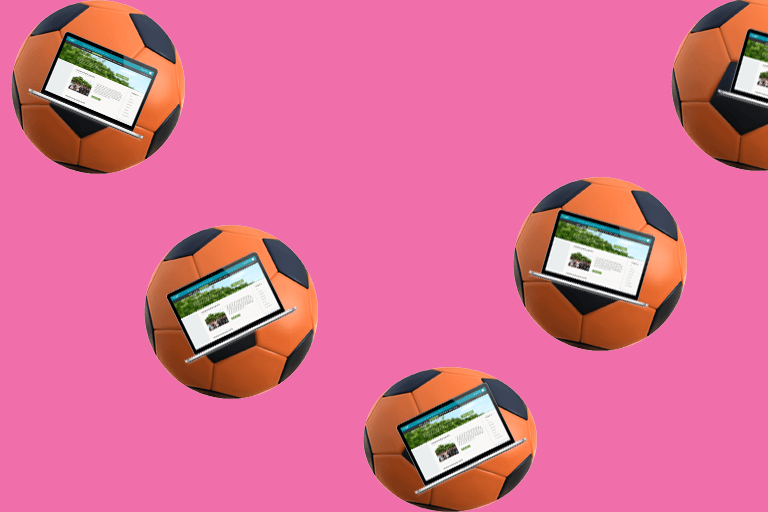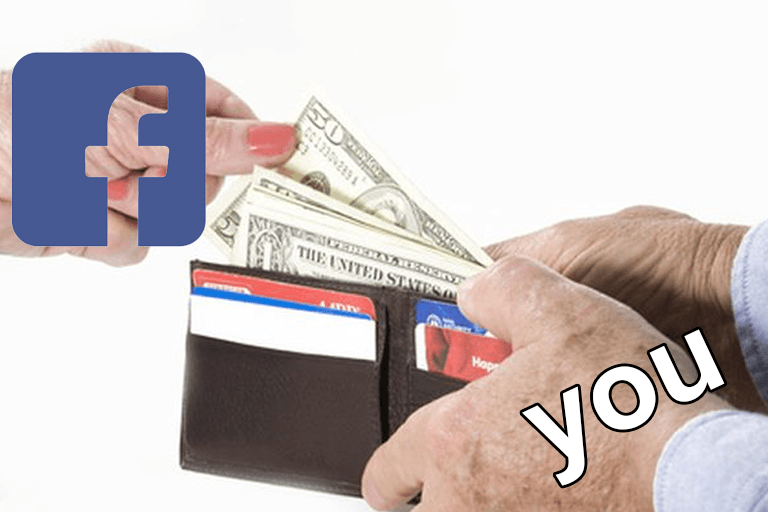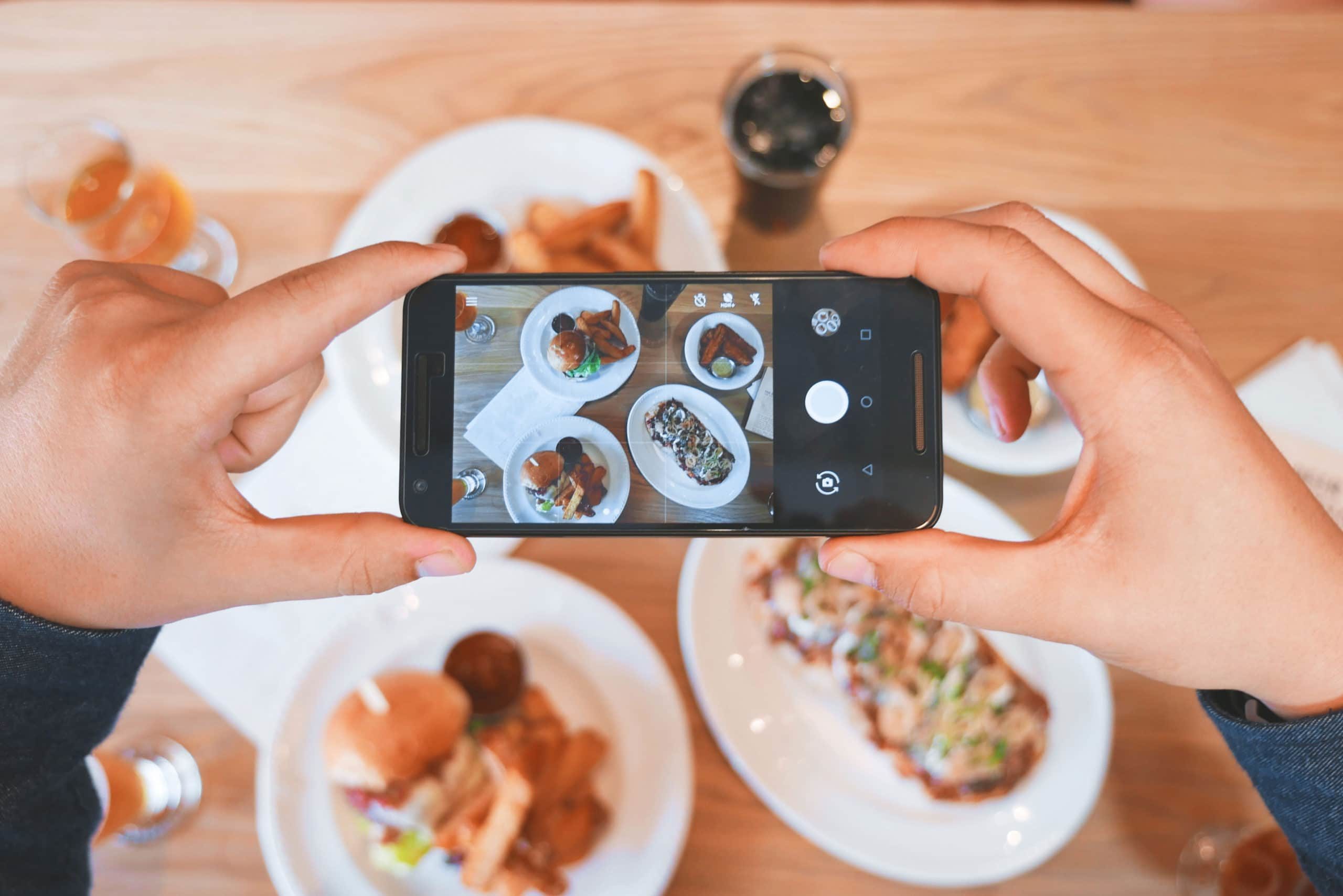25 Free Ways to Drive More Website Traffic (Plus 10 More Cost Effective Methods)
You have a website for a reason, and odds are your online goals can only be achieved if people actually visit that website. With more leads, you have a better chance of making a sale, booking a consulting session, or whatever else you want your website to do. It’s a pretty straightforward concept.
Like most entrepreneurs and startups, you’ve probably discovered that generating traffic isn’t as simple as publishing your website and sharing a Facebook post.
The vast majority of businesses quickly discover that a traffic building strategy is both more important and more difficult than expected.
But getting people to visit your website is only the beginning.
If you want to create a revenue stream from your website, or use your website to drive revenue at a physical location, there’s more strategy involved.

About Your Traffic Building Strategy
Before you begin spending time and potentially money sending more traffic to your website, there are a few things you should understand so that you don’t waste your effort and resources.
Only send traffic to your website if your site can actually do something with that traffic. There’s not much point in working hard to build a following if your website has no way to keep those people engaged and active.
At the very least, your website should have these features before you start driving traffic:
- A way to collect email addresses
- A few pages and/or blog posts that visitors can read
- Navigational buttons to make it easy and intuitive to go from page to page
- Links to your other online platforms such as social media
- A clear goal
Having a clear goal for your website is perhaps the most important of those points. Once you know exactly what you want to accomplish, it’s much easier to determine what you need in order to make it happen.
Remember, too, that not every strategy works for every business.
Don’t quit too early – you’ll need to build your skills for awhile before you start seeing consistent results – and also be cautious about getting swept up in the latest “quick and easy” solution. If you’re looking for the easiest strategy, you’re going to be disappointed when you discover that you still have to put in consistent and constant effort to get results. Plus, the “easiest” solution might not be the right strategy for your business. It’s best to drop that mindset before you begin.

About Your Traffic
You’re attracting more traffic for a reason, right?
As your numbers start building, make sure that your goal for that traffic is actually being accomplished.
Are you seeing conversions? Are people signing up for your mailing list? Is your bounce rate under 50%? These are indicators that your website is in decent shape and your traffic is of reasonable quality.

Meanwhile, if your conversion rate is low, nobody is engaging, and your bounce rate is 70% or higher, there are two potential problems:
You might have a problem with your website. Poor design, confusing layout, information overload, or problems with functionality could be affecting the way people interact with your site. If you suspect that your site is the problem, make updates gradually and watch the results after each change.
Alternatively, you might be finding traffic from the wrong places. The term “low quality traffic” simply means people who aren’t likely to have an interest in your brand, and when you drive traffic from the wrong place, that’s what you get. Change traffic sources one at a time, and monitor results before making another adjustment.
One last thing about your traffic sources:
Don’t rely too heavily on a single channel, especially if that channel is controlled by a third party. Google search traffic and Facebook ads might send significantly more traffic than any of your other sources, but in the space of a few hours, one algorithm change on their end can wipe out all of your hard work.
[tweet_box design=”default” float=”none”]Looking for traffic in all the wrong places? Better traffic buys more stuff, so go for quality over quantity.[/tweet_box]
About Your Attitude
This list is focused on free sources of website traffic. Until you’ve built up your skill level enough to justify the expenditure, stick with these free ways to increase website traffic.
It actually takes greater skill and effort to produce results using free advertising methods, so if you see that you’re generating consistent traffic from the methods listed below, you’re probably ready to start looking into paid advertising.
At the same time, it’s important to break free from the small-minded attitude that plagues so many small businesses – if it’s not free, I’m not going to do it. If you’re unwilling to consider financial investment in your website marketing plan, what you’re really saying is that you doubt your own ability to produce a return on your investment. Entrepreneurs who are confident in their skill will gladly invest money, because that money is going to multiply.
Finally, remember that none of the methods listed below are quick fixes, nor are they temporary. Marketing is forever – if you stop with your traffic building tasks, that traffic will dissolve. There’s a reason Coca Cola still advertises their soda.
Now, here’s what you came here to find:
25 Free Methods to Attract More Website Traffic
1: SEO
Search engine optimization, more commonly referred to as SEO, is the practice of optimizing your website and content so that it ranks better in search engines.
There’s a lot to learn if you’re going to rank well enough to produce traffic from Google, so be prepared to invest time into training yourself and learning good SEO habits. Even after you learn the basics, consistent effort is necessary in order to improve and maintain your rankings.
With at least 200 ranking factors that can impact your position in search results, and regular updates that change how those factors interplay, learning SEO looks daunting.
You don’t have to know everything.
Start with learning about keywords and backlinks, and you’ll have a solid start that can generate results.
[tweet_box design=”default” float=”none”]SEO is more of an art than a science. Some people say it’s a religion. For us, it’s a way of life.[/tweet_box]
2: Write Guest Posts
Guest posting means that you write blog posts on someone else’s website.
Find blogs that are very closely related to your niche, because the key to making this work is finding guest blogging opportunities with brands who share a similar audience.
If you’re going to write guest posts, remember that you’re building a business relationship with the person or company that runs the blog on which you’re being published. They want great content that appeals to their readers, and you want to expose your name and brand to a wider audience.
That means that this should be a win-win situation.
A one sided and self serving focus on your part will prevent you from finding more guest posting opportunities, and it probably won’t actually drive much traffic to your site. Readers know when you’re only looking out for yourself.
3: Give an Interview
Like guest posting, being interviewed is a chance to gain exposure and prove your expertise to a wider audience.
Giving an interview has the added benefit of third party credibility – the fact that someone finds you interesting and/or authoritative enough to justify an interview conveys an instant sense of credibility and importance.
The downside of interviews is that you don’t have control over the content.
Someone else decides that you’re a good source. Someone else writes the article. Someone else makes their commentary to their audience, and someone else distributes that piece of content on their own channels.
Be sure to record every interview just in case.
To find opportunities to contribute as a news source, you can use Help a Reporter Out (HARO) to register as a source.

4: Find Local Speaking Engagements
Sometimes, the best thing you can do to drive traffic to your website is to get out from behind your computer and go out into the world.
Speaking at relevant events such as chamber of commerce meetings, Meetups, networking lunches, and workshops helps you meet new people. Plus, since you’re the guy with the microphone, you get a chance to prove your expertise and you look like the smartest person in the room.
If you’re like most people and get nervous when speaking in front of a crowd, leading workshops is a great place to start.
Don’t let those nerves stop you, though!
Out of the many things on this list, regular public speaking is one of the fastest ways to start gaining traction and traffic for your brand.
5: Submit Magazine Articles
Magazines are like the middle-aged parents of blogs.
Despite the gaggles of advertising, the racks of tabloids that dominate checkout lines, and the 4-month-old family magazines piled on waiting room tables, there are still lots of people who read magazines.
Most magazines also have a corresponding website where they post additional articles. You know, like a blog.
Not all magazines accept unsolicited submissions, but there are a lot that do. Find publications that are closely related to your niche and start checking their website for submission guidelines. In most cases, you’ll send a pitch for an article, and when your pitch is accepted, you can write the full piece and send it in for approval.
If you’re submitting articles for exposure and traffic, be sure to ask ahead of time if you’re allowed to include your website in your byline. Some magazines, especially those that pay for the articles they select, will not allow you to advertise your own brand.

6: Snapchat and/or Instagram Takeovers
Instagram Stories and Snapchat are social media platforms with similar formats. Images and videos are shared to followers, then they disappear completely in 24 hours.
For younger audiences, takeovers can be an effective way to gain more followers.
Here’s how a takeover works:
For a specified period of time, usually for a day or a weekend, another influential person logs into your Snapchat or Instagram account and creates content.
It’s easier to understand with an example:
Imagine you own a health food business, and a popular nutritionist with an online following takes over your Instagram Stories account for a day while they’re going on a hike. They might post a quick video while making breakfast, a picture of the stuff they packed for the hike, and little updates along the trail.
These work almost the same way that guest posting works for blogs. They bring their audience to your account, and your audience learns about them. It’s a win-win.
7: Build Up Your Socials
Social media is a great place to find your following. Like all good things (and like everything else on this list) it takes time and consistent effort to start producing results, but when you start to see the comments and shares pouring in, you’ll be glad you put in the work.
In order for your social media following to work, you must be sure that the people following your socials are the same people who are likely to engage with your website, brand, and products.
Consistency in branding usually takes care of that for you.
Promote the same things in the same ways on all of your outlets, and you’ll attract the right people everywhere.
8: Use Your YouTube Channel
YouTube is the second largest search engine on the internet.
Video content is a little more difficult to produce than written content and still images, and when it’s done right, it pays off.
Creating regular video content and building up your YouTube channel is an excellent way to market your brand and attract new visitors. Since it’s more difficult than posting on your own blog or tweeting, it’s also slightly less noisy than the more common free methods of traffic growth.
Make sure your videos are well lit, have good sound, and are reasonably high quality. Those few details will make you stand out and greatly increase your odds of success.
[tweet_box design=”default” float=”none”]When you think of search, you think of Google. Do you know the second largest search engine is YouTube? (hint: you do now)[/tweet_box]
9: Start Podcasting
A podcast can be video-based, or it can be audio only. Generally, podcasts are digital audio files that can be downloaded to your devices, and they’re usually done in a series with regular episodes.
Podcasts attract new followers by getting in front of people who might not regularly use the more popular channels such as social media.
When podcasting was first becoming a thing, it was young people who made it popular. Today, the listenership is much older, and the largest group listening to podcasting is actually adults 25 to 54 years old.
If you’re going to start a podcast, get a decent microphone and some basic sound editing software. You shouldn’t have to spend a lot to get started right.
10: Write LinkedIn Articles
LinkedIn’s built-in blogging feature can be an excellent strategy for appropriate businesses.
While LinkedIn has more than 460 million users, keep in mind that their active user base is far smaller than that. The people who actively use LinkedIn are mostly there to make professional connections – think of people like recruiters, hiring managers, job hunters, and entrepreneurs in industries where networking is a major job activity.
If your brand is a fit for LinkedIn’s active audience, blogging regularly from your profile can be a powerful tool that attracts and engages new followers. If your audience isn’t active on LinkedIn, use your time elsewhere.

11: Give a Free Webinar
If the thought of live public speaking makes you break into a cold sweat, hosting a webinar might be an ideal solution.
When a viewer wants to watch your webinar, they generally register with their email address, which gives you the option to continue marketing to them later.
Webinars can be pre-recorded or live; just be sure that you honestly disclose which it is.
Many webinar hosts also offer live webinars with a recorded replay available to registrants, thus creating a great balance between interactivity and convenience.
For WordPress users, WP Webinar System allows you to host webinars directly on your WordPress site. It sometimes takes a little bit of minor formatting skills to get things to look and behave the way you want, but if you have some basic coding chops and you want to bring people to your site with webinars, it’s a good premium plugin option.

12: Optimize and Reshare Old Content
A post or article might be old news to you, but for all the billions of people who haven’t read it, it’s still new.
You’ve probably got lots of “old” content with great potential. You’ve been working on your brand, and there are new people in your audience that would love to see that stuff. Meanwhile, your long-time followers won’t mind the throwback.
Go through your past posts and give them a good readthrough. Odds are, your skills and writing ability has improved since then, so update the writing, change out some images, and make any improvements that come to mind.
Now, share that refreshed content around just like you do new posts.
By continuously refreshing old content and writing new content, you can drastically increase your output volume without doing a lot of extra writing.

13: Join the Hot Conversation
Have you ever noticed how everyone seems to be part of one big conversation? Certain topics somehow capture the collective attention of entire communities, and suddenly, everyone has something to say about it.
Chiming in with your expert input can be a great way to attract new attention.
Just be careful – don’t dilute your brand by having an opinion on everything. Keep your personal thoughts personal, and only use your brand as a platform when the current hot topic is relevant.
14: Help People in Forums and Groups
Notice that this says help people in groups – not “spam your link to forums and groups.” There’s a big difference.

Find groups and forums that are highly relevant to your brand by searching online, on Facebook, and even on your competitor’s sites. Join those communities and start participating as a helpful contributor by answering questions, offering advice, and joining conversations.
You can include your brand name when you register. It’s more important to just be a real, helpful human being, though.
Eventually, people will start to recognize your name and notice that you really know your stuff. They’ll get curious and ask about what you do, and that’s when you can mention your business.
If you start dropping links to your blog posts, suggesting people check out your site for answers, or otherwise get spammy in the group, you won’t generate any traffic (nobody likes spammers) and you’ll likely get booted from the community.
15: Offer a Free Online Course
Education is a big deal, and giving away a course for free can attract lots of new people to your website.
Be sure that your course topic is relevant to your audience – for example, if you’re a real estate agent, you might offer a free course on how to stage your home for better pictures.
Courses can also be an income generator for you. Give your best (beginner level) course away for free, and it will contribute to higher sales on your other information products.

16: Teach a Live Workshop
A live workshop can increase your audience size and generate some income, and if you’re smart about it, you can likely find a place to host you that will handle some of your marketing and provide a free venue.
Your workshop can be free or paid, and it can be a couple of hours or a few days.
Leading a paid workshop can be a lot of work, and the more you charge, the higher the expectations – if you’ve never done it before, it’s wisest to start with a short, free session at your local chamber of commerce or a professional networking group.
17: Have a Virtual Blogger Party
In traditional business, the other people in your industry are your competition. In the blogging world, those people are part of your community.
The blogger culture is pro-collaboration, so reach out to other people who blog about the same things you do and find a way to work together. You both benefit, and neither of you are likely to lose any noticeable portion of your audience by sharing with one another.
A blogger party is a group project in which several bloggers agree to post about something similar, and the posts are all linked together.
Here’s an example:
Let’s imagine you have a business advice blog, so you reach out to several other bloggers to create a virtual book club. Once each month, you all read and review the same business book, and at the bottom of your review post, you explain that this is part of a blogger book club and link to the other participants’ posts.
Be careful about exchanging links, though – blogger parties look a little bit like link circles, which are a black hat tactic that Google penalizes.
18: Get Out There and Network
Like live speaking and workshops, there’s immense power in the face-to-face quality of networking.
Dismissing an ad or a social media post is easy. Dismissing an actual human standing in front of you is far more difficult.
You’ll probably notice that lots of people ask for your website address or card. Remember that most of those people are trying to be polite, though. When someone is truly interested in your brand, they’ll show much more engagement.
19: Accept Guest Posts
Earlier, we talked about writing guest posts as a strategy to generate more traffic. Now, let’s consider inviting guests to post on your site.
When you include guest posts on your site, you get content without the work of writing it, and the author brings some of their audience to your page.
Be sure to select writers who have built audiences similar to yours, and it’s wise to retain editorial control. Always read over posts before they go live to ensure they’re appropriate for your brand.
You don’t necessarily have to pay for the content, but paid contributors are an option, as well.
[tweet_box design=”default” float=”none”]Wouldn’t it be nice if someone else wrote and promoted your blog posts for free? It’s called guest posting, and it’s totally a thing.[/tweet_box]
20: Do a Featured Series
Have you ever been featured in a newspaper, and then your mom bought 35 copies for all of her friends and family? That’s similar to what happens when you feature other people and businesses on your blog.
You don’t need to do an interview or ask for a guest post to feature someone on your blog.
Write a series of posts about people, companies, or organizations that are interesting for your audience, then let those people know you wrote about them.
Not everyone is going to share the post, but some of them will blast your content to their entire audience. You’re giving them an added boost with your third party credibility, so they’ll give you traffic.
21: Trade Services for Advertising
There’s a bit of a stigma around doing work for “exposure,” but if you do it strategically, trading work for advertising can be very effective. The key is to offer your comped services only where you’re likely to see a result.
Rather than performing free work in the hopes that something will come of it, negotiate ahead of time and determine exactly what is expected of each party.
Do you expect a certain number of Facebook posts? Must the recipient use some kind of hashtag?
Make sure the person or brand with which you trade is a good fit for advertising purposes, and always do your best work. Don’t cut corners because it’s free, since the results will be very visible.

22: Host Giveaways
Free stuff is a powerful motivator, isn’t it?
When you do giveaways on your website or social media channel, you don’t actually have to give away your stuff. You can contact other brands in your niche and offer to promote them by doing a giveaway of their products, and companies will often donate products or services for free.
There are lots of giveaway tools, including the premium KingSumo, to help you host giveaways with ease…but you don’t technically need a tool to do a giveaway. You can track participants more easily if you use comments or some other visible criteria as the method of entry.
Giveaways often have some kind of sharing requirement to help broaden your reach, and by giving away targeted freebies, you can get in front of engaged people.

23: Wholesale Your Products
If you have the capacity, starting a wholesale program to get your products in other stores is an ideal way to increase your customer base and make more money.
Lots of small business owners shy away from wholesaling, but even if you just target local boutiques in your immediate area, having your product in a store is great for your reputation and your bottom line.
Digital products can be sold “wholesale,” too.
Affiliate programs allow other websites to market your online products, both physical and digital, and pay a small percentage when someone they referred makes a purchase.
Incentivize other people to do your marketing for you, and you’ll expand your reach while you’re making money.
24: Use Your Email List
You’ve been working on building up your email list, haven’t you?
Don’t let that list go to waste. Those are people who have already told you they’re interested in learning more about your brand, so reach out.
Using your email list doesn’t necessarily mean sending junk mail. You can send your latest blog posts, a roundup of great stuff you found on the web, or other valuable content like a monthly video message that helps them solve common problems.
Marketing to your email list is ideal, but if your marketing chops aren’t there yet, just use your email list to stay in touch in the meantime. Treat it like a special, private blog.
[tweet_box design=”default” float=”none”]Some people took the time and effort to join your mailing list. You should probably email them sometimes.[/tweet_box]
25: Write and Publish a Book
When you’re literally the guy that wrote the book on your topic, your credibility goes through the roof, even if you self publish.
Marketing a book is a big responsibility in itself, so know what you’re getting yourself into if you plan to write a book in your area of expertise. If writing is your thing, though, publishing a book could be a great move for you.
There are some costs associated with self-publishing. Traditional publishing generally doesn’t involve up-front costs, but finding a publisher (or an agent who finds a publisher) is far more labor intensive.
Publishing a free or low-cost ebook is also an option. Just be sure that your ebook is just as well-edited, polished, and properly designed as it would be had it gone through a publisher’s marketing department.
10 More Not-Free Methods To Attract More Traffic & Build Your Audience
The free methods are always the most difficult to use.
Since they have such an accessible entry point, there are a lot of people out there doing the same things, and a large proportion of those people aren’t doing them well. If you want to be effective, you have to stand out while you gradually build a following.
Paying for more visibility is something you’re eventually going to do, even if you’ve done well with your organic (free) reach.

If you lack marketing experience and you decide to pay for advertising, the most intelligent thing you can do is work with a professional marketer who specializes in the type of advertising you want to do. Decent marketing is expensive, but great marketing is free – your returns will more than pay for your investment in a savvy marketing pro.
Some types of marketing require a lot of investment up front, while others are attainable with even a tight budget. In marketing, it’s not the initial cost that matters – it’s the return on your investment.
Choose methods that make the most sense for your business and closely track your results. After all, a $5,000 investment that produces $100,000 in sales is way cheaper than a $100 investment with an $80 return.
Here are 10 marketing methods to consider when you’re ready to allocate a marketing budget.
Bonus Method 1: Facebook and Instagram Ads
Facebook’s ad platform is one of the best paid platforms for business owners just starting to invest in their marketing strategy.
It’s one of the few marketing media where a small investment can produce a worthwhile return, and it’s a cost effective way to test and validate your ideas before deploying on a larger scale.
Create an account with Facebook Ads Manager rather than running all of your ads directly from your business page – you have more options, more tracking capabilities, and more marketing power by using Business Manager as your center of operations.
Take advantage of Facebook Blueprint, too. Blueprint is Facebook’s free training platform packed full of courses on marketing your business through Instagram and Facebook ads, and since Facebook has a strong interest in helping you succeed as an advertiser (so that you’ll continue to pay to run ads) they give you top notch insights on what works for companies like yours.

Bonus Method 2: Other Social Media Ads
While Facebook ads are a category of their own, other social media advertising has its place, too.
Depending on your business model and your audience’s behaviors, you might want to advertise on Twitter, Pinterest, LinkedIn, or SnapChat. Each platform has a distinct style and flavor, and the different ad products reflect that.
Decide which platforms matter by focusing wherever your customer base is most engaged with your brand and brands like yours.
Bonus Method 3: YouTube Pre-Roll Ads
If you’ve got video chops, running video ads on YouTube could be a great idea for your business. If you’re completely inept at video and don’t have the budget to work with a pro, you might want to work on building up your YouTube channel (and your skills) before you start paying for views.
Pre-roll ads are managed through your Google Adwords account and they work a bit like pay-per-click ads.
You’re charged by the number of complete video views your ad receives, meaning that if a viewer skips your ad before the end, you’re not billed for that.
Be sure that your sound quality and your lighting are excellent before running a video ad. You want to look like a professional, right?
[tweet_box design=”default” float=”none”]When you’ve got the chops for it, YouTube ads are worth the effort. If you don’t have the chops, hire a pro.[/tweet_box]
Bonus Method 4: Google Pay-Per-Click
PPC ads take more skill to get right, and in most cases, you’ll have to pass a tipping point in investment before you see any meaningful returns.
In other words, PPC ads are not great for businesses with limited budgets – most companies who create a return on their PPC investment spend thousands on ads to generate enough exposure and clicks to sell their goods.
Pay-per-click is a competitive medium.
When you have a firm grasp of keyword strategy, some great organic SEO results, and a healthy marketing budget, you’re ready to explore PPC as an option to send more traffic to your website.

Bonus Method 5: Influencer Outreach
Networking with other bloggers and content creators is often free. Getting an influencer to endorse your brand is going to cost you.
Here’s the thing about influencers:
There are a lot of people calling themselves “influencers” on social media because they have lots of “followers,” but do just a little bit of digging and you’ll realize that they bought a package of likes and most of their followers are robots. Paying those people to talk about your product is a waste of time and money.
Influencer marketing works really well when you meet these criteria:
- The influencer has a large, engaged audience that trusts them
- Your brand and the influencer’s audience are a close match
- The cost of exposure is low enough that you can reasonably generate a return
Bonus Method 6: Community Sponsorships
Sponsoring events within your community is about more than just getting your name in front of people.
Thoughtful sponsoring gives your brand an opportunity to connect with ideals, people, and causes that matter to you.
Look for sponsorship opportunities at events where you can send representatives to be the face of your brand, and focus on events and organizations with an audience that’s very similar to your customer base.
Bonus Method 7: Hosting Events
Businesses have grand opening parties to attract a bunch of new customers to their store as quickly as possible. The same principle works later on, too.
For stores with physical locations, there are a couple of ways you can use events to get more foot traffic.
The first (and most obvious) is to throw some kind of shindig yourself. Product launch parties, monthly mixers, and sampling events are all reasonable excuses to host guests.
You don’t have to be the organizer, though.
Lots of people are looking for venues to house things like networking events, book launches, and trivia games. Find someone who will bring in the right kind of people, take a supporting role, and you both win.

Bonus Method 8: Direct Mail
Most people throw away their junk mail without reading it, but here’s the thing:
Most people who see a commercial don’t run out and buy that thing. A few do.
Most people who get served a Facebook ad don’t click on it. A few do.
Advertisements in general rely on small response rates to justify their expense, and direct mail is no different. The reason mail advertising works so well is because the expense to reach a large number of people is relatively low, so the returns are high.
If you’re not great at copywriting, it’s worth the expense to hire a pro to do your sales letters. Constantly test new letters on smaller mailing lists and send the most successful again and again.
Bonus Method 9: Outdoor Advertising
Choosing a location and design for a successful billboard takes a little more marketing skill than other methods, mostly because outdoor advertising carries a hefty expense. You need to nail your marketing to recoup the expense.
Making outdoor advertising work is often a matter of creating a multi-layered campaign.
Rather than running a billboard in a heavily trafficked area and hoping for the best, you can use that gigantic sign to complement ads you’re running in other places.

Bonus Method 10: Print Advertising
Despite what you’ve heard, people still read things that are written on paper.
Successful print advertising is a matter of good copy and a good match between your brand and the print audience.
Smaller circulation with a more specific audience is most likely to generate a return for your ad dollar, while if you’re going for the widest exposure possible, you’ll need to cross a tipping point in readership to make it worth your while.
You might be noticing a trend in all of these paid advertising tips – it’s wise to choose strategy over brute force.
Remember that a healthy traffic strategy draws visitors from multiple sources. Don’t pin all your hopes on one strategy, especially when that strategy leaves your traffic at the mercy of a third party like Google or Facebook.
Stay consistent and keep learning, and a year from now, your business will be worlds ahead of where it is now.

